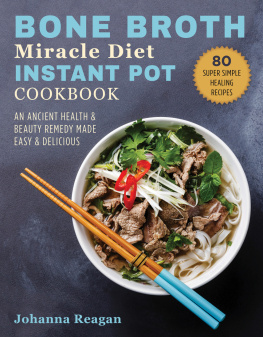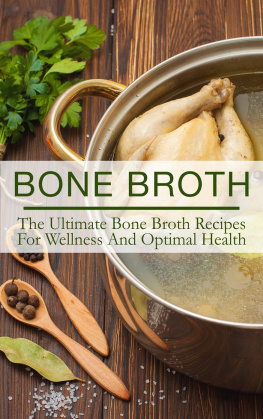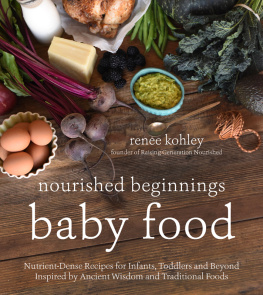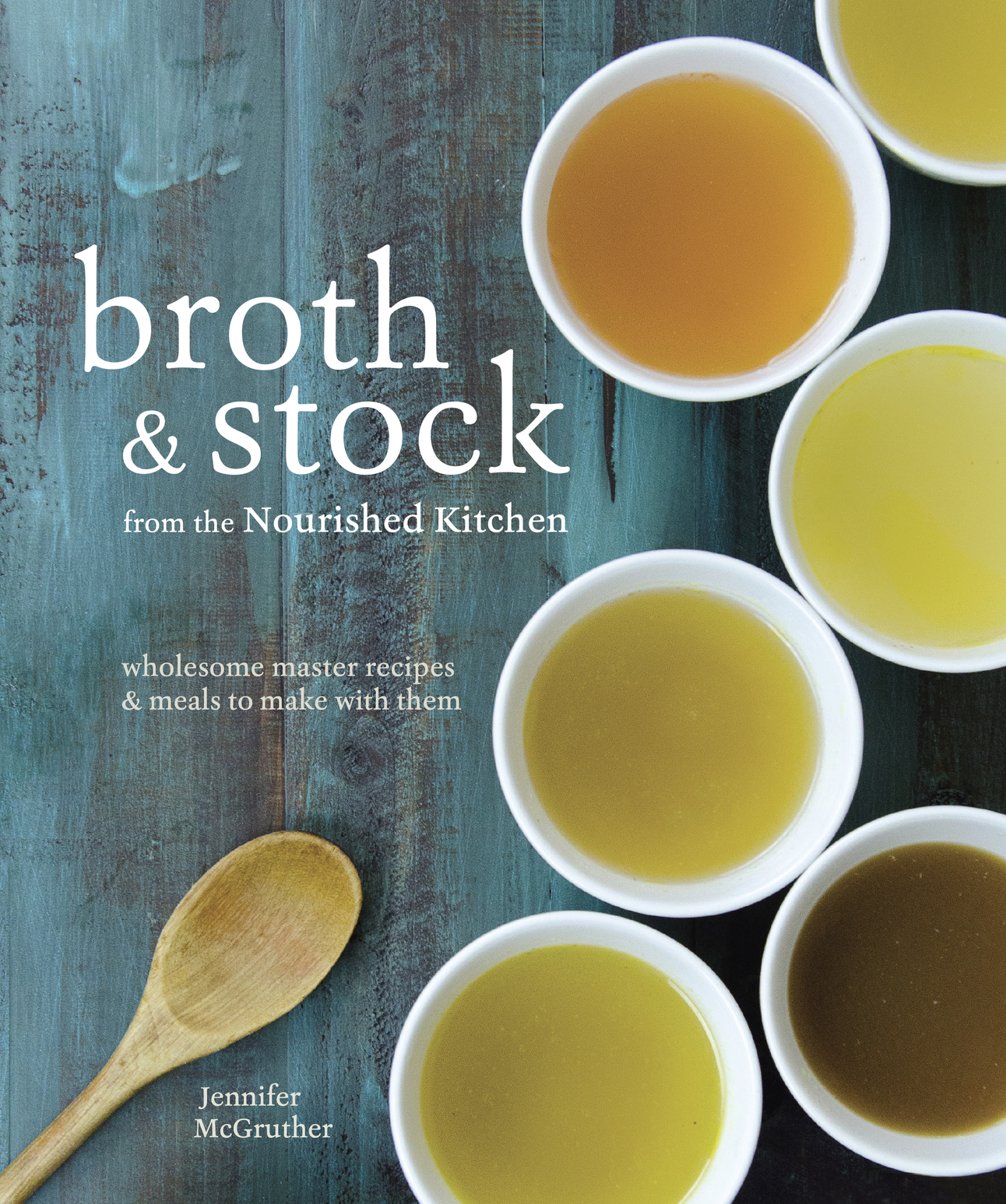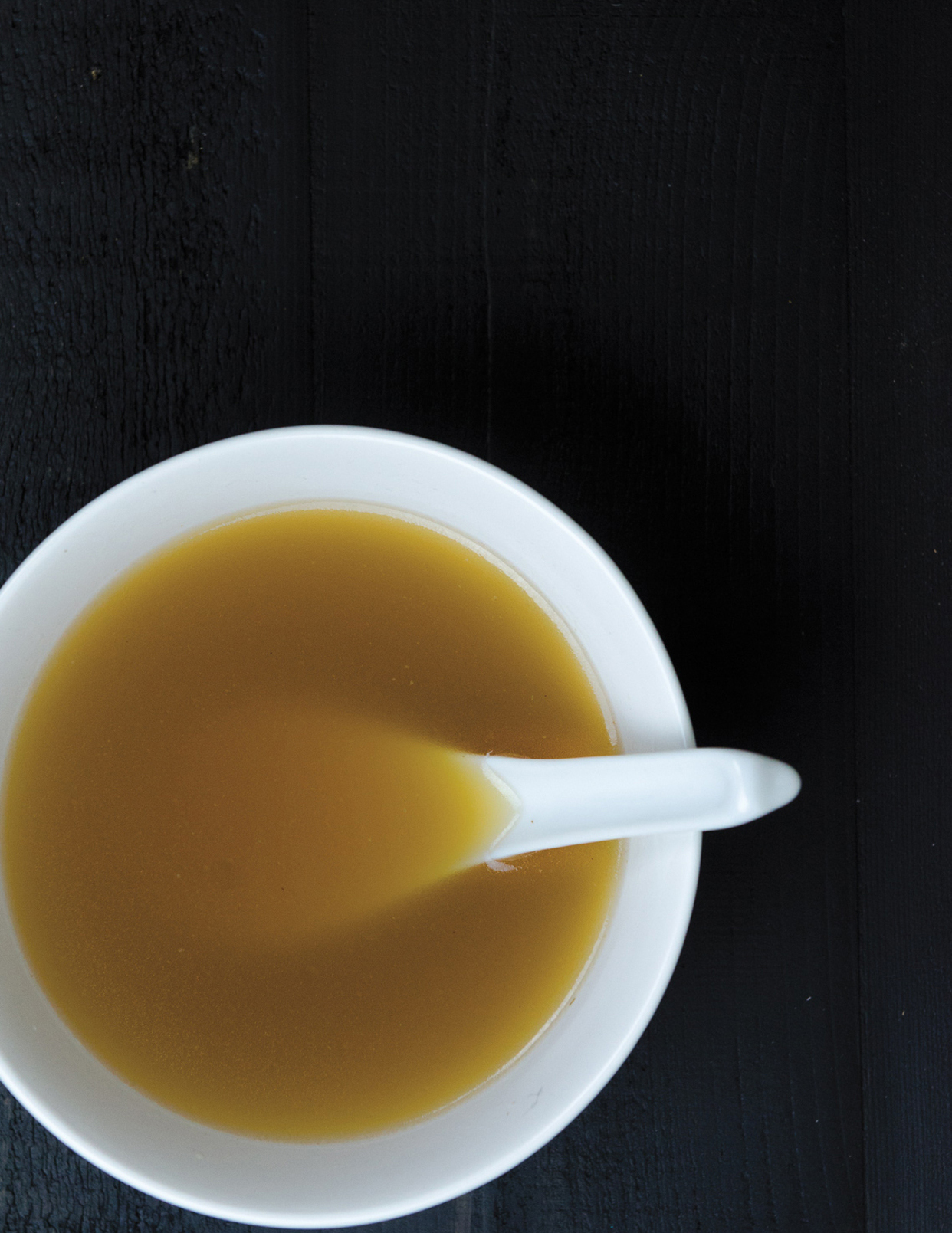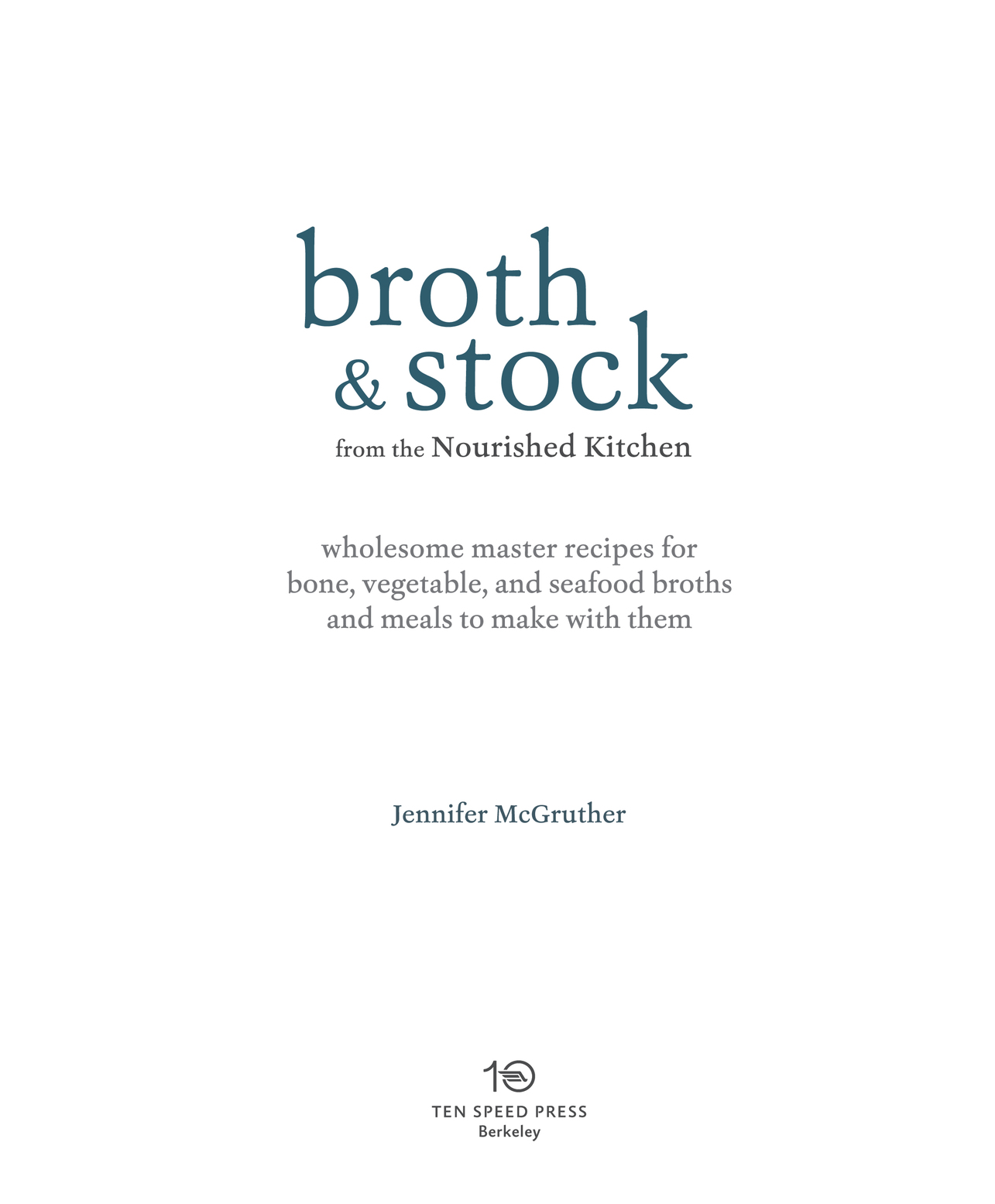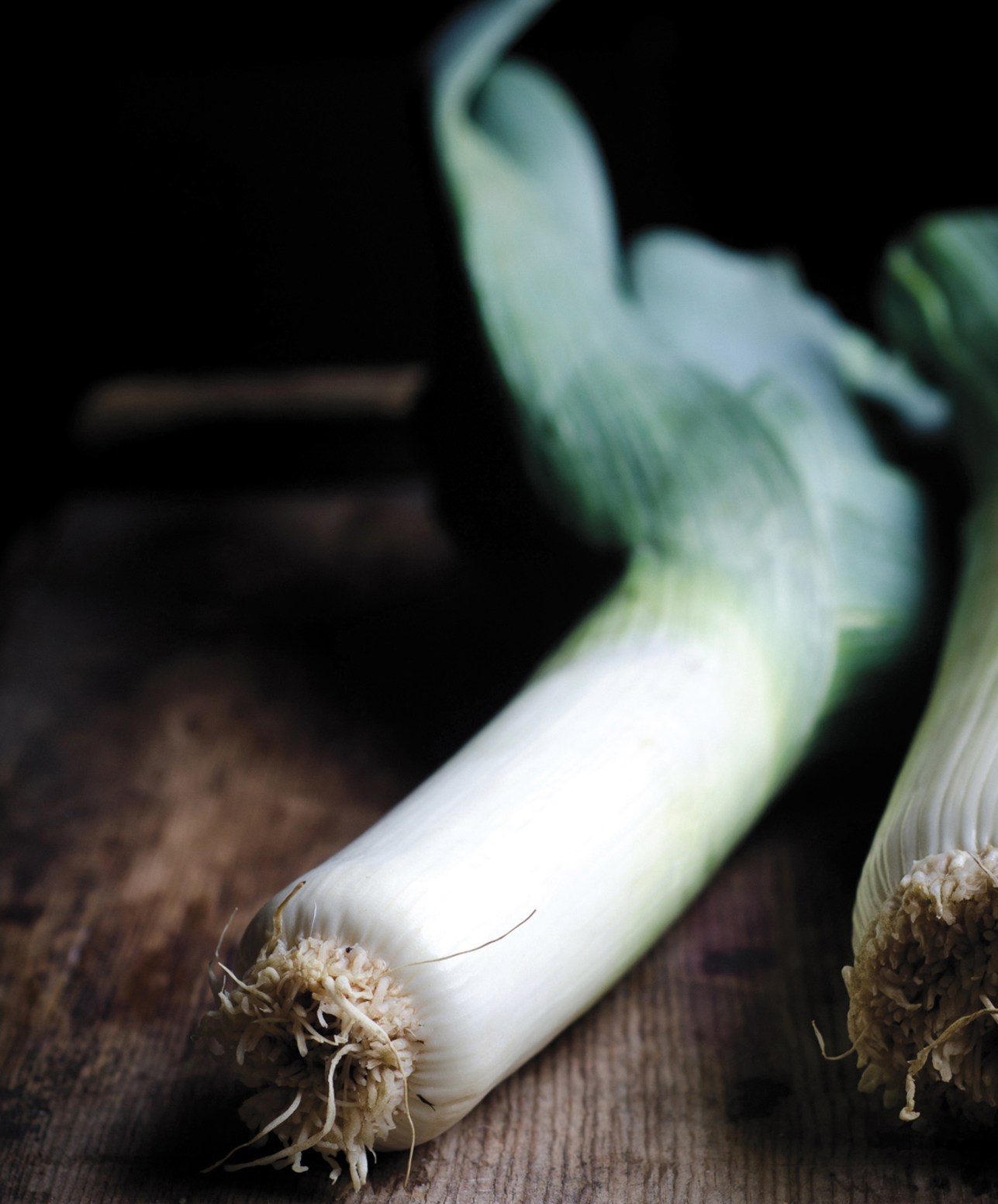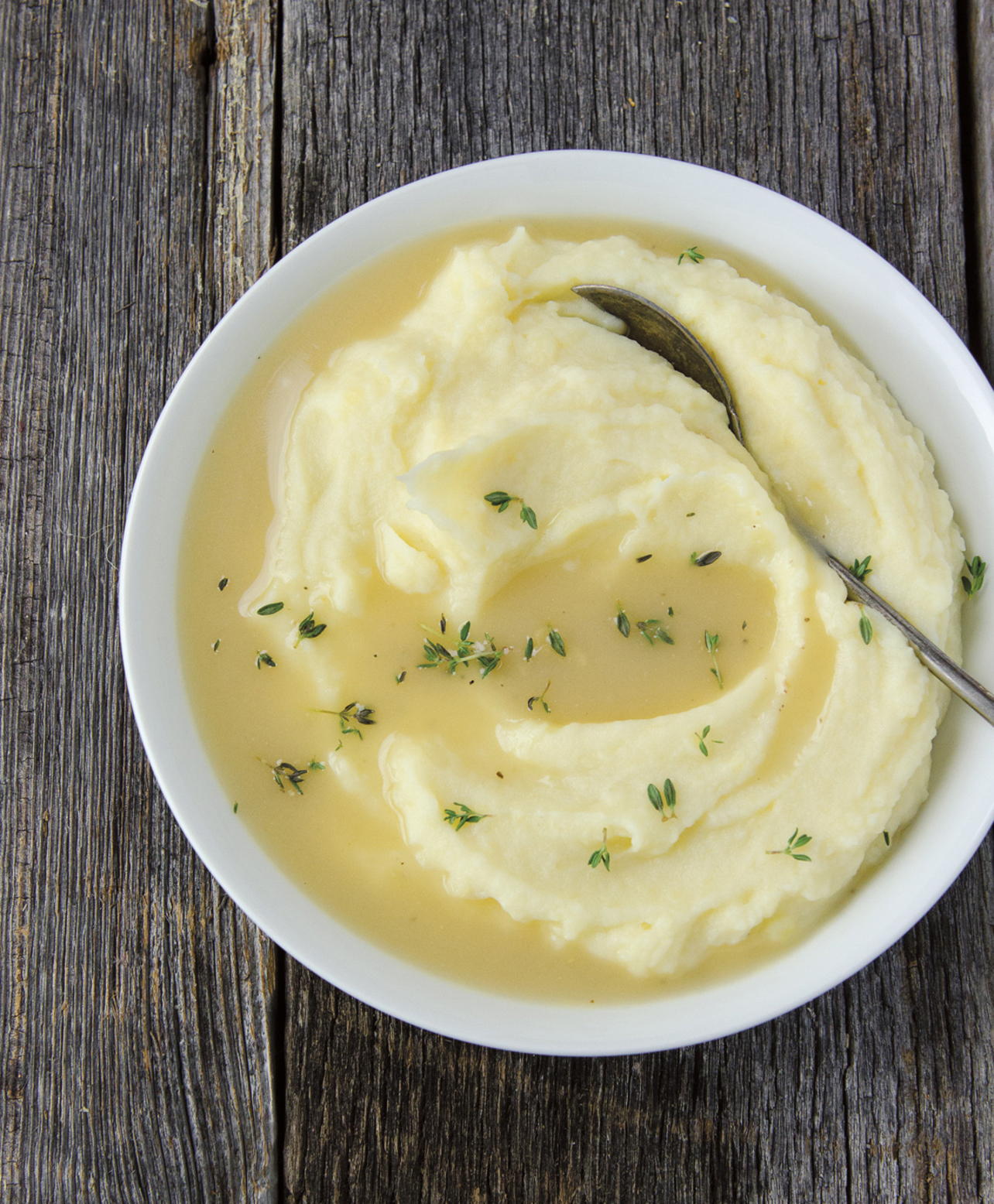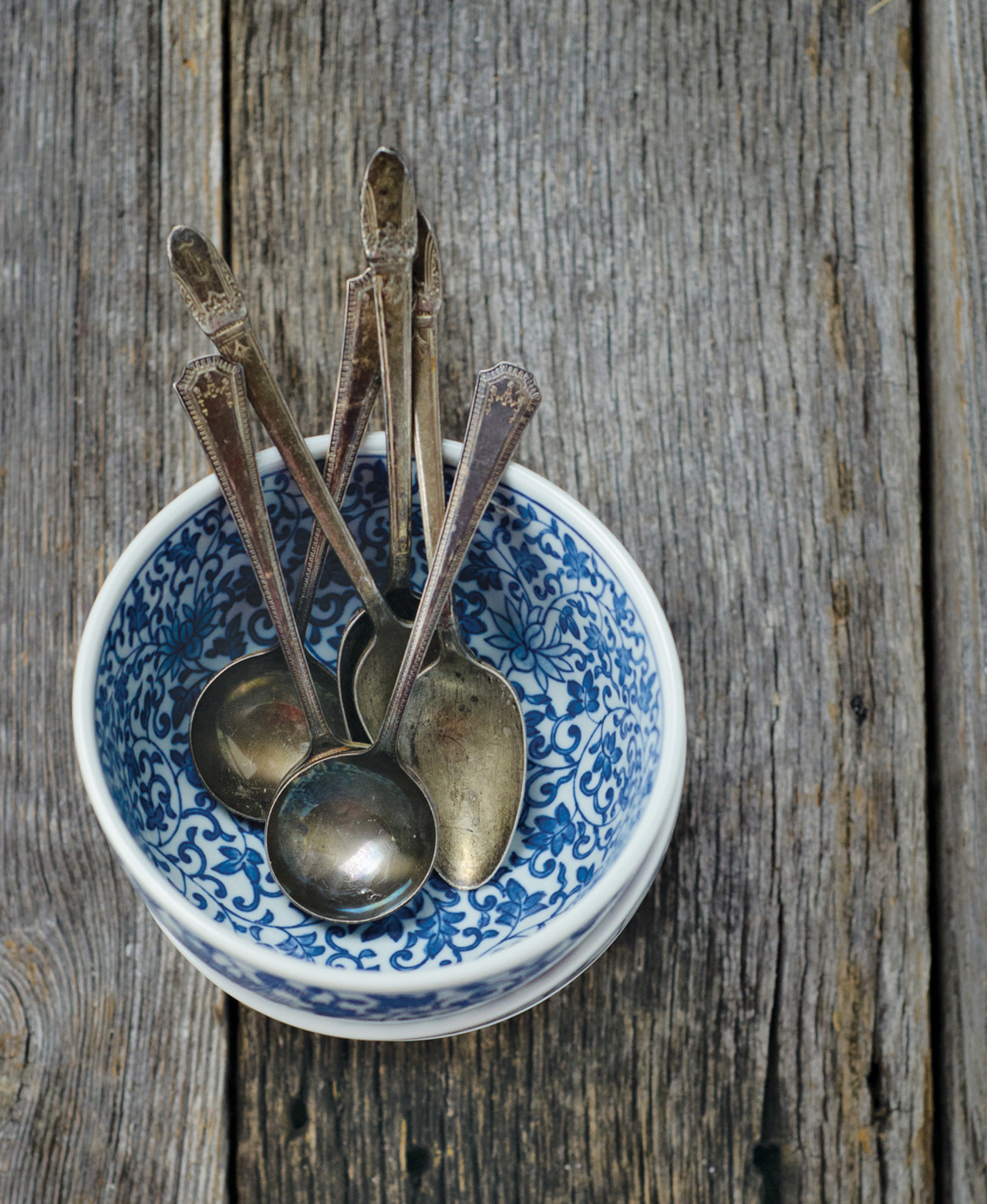All rights reserved.
Published in the United States by Ten Speed Press, an imprint of the Crown Publishing Group, a division of Penguin Random House LLC, New York.
Ten Speed Press and the Ten Speed Press colophon are registered trademarks of Penguin Random House LLC.
Names: McGruther, Jennifer, author.
Title: Broth and stock from the Nourished kitchen : wholesome master recipes and how to cook with them / by Jennifer McGruther.
Description: First edition. | Berkeley : Ten Speed Press, 2016. | Includes bibliographical references and index.
Subjects: LCSH: Soups. | Stews. | BISAC: COOKING / Specific Ingredients / Natural Foods. | COOKING / Courses & Dishes / Soups & Stews. | COOKING / Health & Healing / General. | LCGFT: Cookbooks.
introduction
Most days of the week, I keep an enameled cast-iron pot on the back burner of my stove where bones simmer in water to make broth. I sip this broth in the morning sprinkled with sea salt, chopped fresh garlic, and flat-leaf parsley. I add it to soups and stews, gravies and sauces, and it is perpetually present at the kitchen table in some form or another. Broth nourishes the body and soothes the soul. I remember how a mug of golden, rich chicken broth or a bowl of chicken soup laced with noodles and dotted with carrots and celery seemed to alleviate childhood colds, or how beef vegetable soup fortified my sister and me against a cold winter day. Few foods offer such resolute and heartening comfort.
Broth always seems to appear in little bursts of my memory. There was the rich matzo ball soup my grandfather and I shared ritualistically during my visits to New York as a child. There was my first taste of dashi, a Japanese broth made from seaweed and bonito flakes, when I moved with my family from the United States to Japan at six. And there were the steadfast red-and-white cans full of beef and barley or tomato soup that lurked in my cupboard growing up.
Broths and stocks, soups, stews, and sauces find a well-loved and much deserved place in kitchens throughout the world. While they form the foundation of professional cooking, broths and stocks, at their heart, are foods for the home. They are foods not only of comfort, but also of frugality and the pressure to waste as little as possible, lest bellies go hungry. In this way, to make broth not only fills the functional role of sating hunger and thirst, but also teaches us a lesson in the values of patience, simplicity, and thrift. There is virtue in the humble soup pot.
patience
Making broth is an experience of delayed gratification. In an age where nearly everything is immediately available with the tap of a finger on a screen, the development and pursuit of patience is a virtue that needs exercising. To extract the goodness of broth, its flavor, gelatin-rich protein, and trace minerals, depends upon several patient hours of simmering. Broth is not the stuff of quick and easy thirty-minute meals, so plan accordingly. You dont need to tend your stockpot with ever-vigilant care, but it does take many hours for bones to release their nutrients and for bony cuts of meat to surrender their flavor before falling apart into beautiful tenderness. After all, good food takes good time.
simplicity
With few exceptions, making broths and stocks is wonderfully simple. If you can boil water, you can make a good broth. The simplest of stocks require nothing more than bones, water, and a pot to cook them in. Among the best broths, stocks and bone broths, (both commercially prepared and homemade) that we tested for the Nourished Kitchen website were not those with the most herbs and spices or aromatic vegetables added to the pot; rather, the stocks and broths our taste testers favored the most were those that contained the leastnothing more than bones and water, with a sprinkling of sea salt for good measure. This produces a pure, neutrally flavored liquid that is lovely on its own as well as adaptable to suit the needs of the individual dishes you make from it.
thrift
Inexpensive to make, broths and stocks are powerfully nutritious but cost-effective food. You can purchase bones straight from ranchers, farmers, and butchers for a fraction of the cost of prime cuts of meat, while the spent frames of roasted chickens and turkeys coupled with vegetable scraps make a broth that costs little to cook at home. In saving what you can, you minimize food waste in your home and eke out every bit of nutrition from the foods you offer your family.
broth and history
Bone broths feature prominently in traditional food pathways around the world. When food is scarce, no one can afford the luxury of waste. Native Americans prepared bone broths first by lining baskets with clay so that they could hold water, arranging the bones of wild game inside them, and pouring in water. They would drop stones heated in campfires into the baskets, which would then heat the water to make broth. Chicken and fish broths feature prominently in the traditional cooking of Asia, and long-simmered broths made from beef marrow form the base of several traditional Korean dishes.
While bones need to simmer for several hours to several days before they will release their nutrients and flavor, broths and stocks are in many ways the original fast food. In medieval times, innkeepers kept a pot of soup, sometimes called the hunters pot, hanging over the hearth, from which they could readily feed passersby. Never fully emptied, the pot hung perpetually at the ready, with innkeepers replacing its contents as needed, adding more meaty bones, starchy roots, herbs, ale, and stale bread throughout the week, so that a warming, satisfying potage lay waiting, ready to welcome travelers. All one needed to do was ladle it into a bowl.


